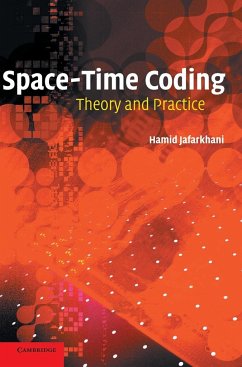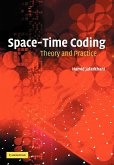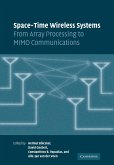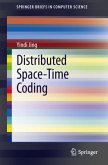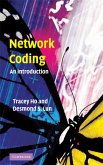Short description/annotation
Covers the fundamental principles of space-time coding for wireless communications over MIMO channels.
Main description
This book covers the fundamental principles of space-time coding for wireless communications over multiple-input multiple-output (MIMO) channels, and sets out practical coding methods for achieving the performance improvements predicted by the theory. Starting with background material on wireless communications and the capacity of MIMO channels, the book then reviews design criteria for space-time codes. A detailed treatment of the theory behind space-time block codes then leads on to an in-depth discussion of space-time trellis codes. The book continues with discussion of differential space-time modulation, BLAST and some other space-time processing methods and the final chapter addresses additional topics in space-time coding. The theory and practice sections can be used independently of each other. Written by one of the inventors of space-time block coding, this book is ideal for a graduate student familiar with the basics of digital communications, and for engineers implementing the theory in real systems.
Table of contents:
Preface; Standard notation; Space-time coding notation; Abbreviations; 1. Introduction; 2. Capacity of multiple-input multiple-output channels; 3. Space-time code design criteria; 4. Orthogonal space-time block codes; 5. Quasi-orthogonal space-time block codes; 6. Space-time trellis codes; 7. Super-orthogonal space-time trellis codes; 8. Differential space-time modulation; 9. Spatial multiplexing and receiver design; 10. Non-orthogonal space-time block codes; 11. Additional topics in space-time coding; Bibliography.
Hinweis: Dieser Artikel kann nur an eine deutsche Lieferadresse ausgeliefert werden.
Covers the fundamental principles of space-time coding for wireless communications over MIMO channels.
Main description
This book covers the fundamental principles of space-time coding for wireless communications over multiple-input multiple-output (MIMO) channels, and sets out practical coding methods for achieving the performance improvements predicted by the theory. Starting with background material on wireless communications and the capacity of MIMO channels, the book then reviews design criteria for space-time codes. A detailed treatment of the theory behind space-time block codes then leads on to an in-depth discussion of space-time trellis codes. The book continues with discussion of differential space-time modulation, BLAST and some other space-time processing methods and the final chapter addresses additional topics in space-time coding. The theory and practice sections can be used independently of each other. Written by one of the inventors of space-time block coding, this book is ideal for a graduate student familiar with the basics of digital communications, and for engineers implementing the theory in real systems.
Table of contents:
Preface; Standard notation; Space-time coding notation; Abbreviations; 1. Introduction; 2. Capacity of multiple-input multiple-output channels; 3. Space-time code design criteria; 4. Orthogonal space-time block codes; 5. Quasi-orthogonal space-time block codes; 6. Space-time trellis codes; 7. Super-orthogonal space-time trellis codes; 8. Differential space-time modulation; 9. Spatial multiplexing and receiver design; 10. Non-orthogonal space-time block codes; 11. Additional topics in space-time coding; Bibliography.
Hinweis: Dieser Artikel kann nur an eine deutsche Lieferadresse ausgeliefert werden.

